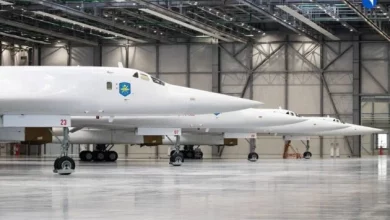Sweden buys 321 armored vehicles from Patria

The Swedish Defence Procurement Agency (FMV) has inked a contract with Finland-based defense and technology company Patria, securing the acquisition of 321 six-wheeled armored vehicles, marking one of Sweden’s largest defense procurement deals to date.
Valued at approximately 470 million euros ($509 million), the contract underscores Sweden’s strategic commitment to bolstering its defense capabilities. The procured vehicles, designated as Pansarterrängbil 300 in Sweden, will be stationed at Livgardet regiment in Kungsängen, alongside various other units across the nation.
Patria’s forthcoming delivery comprises the troop transportation variant of the 6×6 vehicle, equipped with cutting-edge technology to ensure top-notch protection for up to 12 crew members. Renowned for its modularity, the vehicle offers versatility, adaptable for a spectrum of operational roles, including troop transport, command and control, and ambulance duties within the Swedish Armed Forces.
Expressing Patria’s commitment to bolstering Sweden’s defense landscape, Mats Warstedt, Senior Vice President of Market Area Nordics at Patria, emphasized the company’s dedication to promptly fulfilling deliveries, leveraging its successful track record in prior engagements. He highlighted the collaborative nature of the project, citing the vehicle’s design tailored for Nordic conditions and significant contributions from Swedish suppliers, including the engine and armor steel.
The procurement aligns with Sweden’s broader participation in the Common Armored Vehicle System (CAVS) collaboration program, a unique endeavor involving multiple European nations. Already engaged by Finland, Latvia, Sweden, and Germany, the initiative aims to foster collective defense capabilities and interoperability. Notably, Finland recently augmented its fleet with an additional 40 6×6 vehicles, underscoring the momentum of the collaborative effort.





